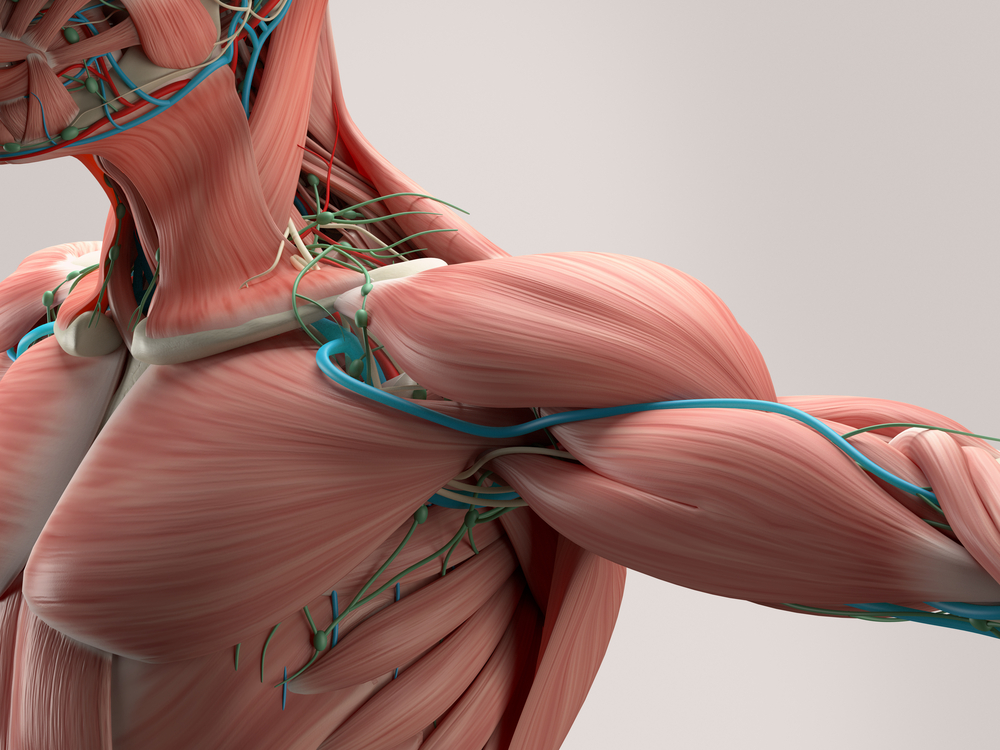Massage Therapy for LEMS
Written by |

For some with Lambert-Eaton myasthenic syndrome (LEMS), massage therapy may help in reducing muscle pain and weakness, as well as in improving flexibility.
Here’s more information about the disease and massage therapy.
About LEMS
LEMS is a progressive autoimmune disorder that affects the nerve cells that control muscle movement. Its primary symptoms include muscle weakness, fatigue, eye problems, and pain.
Between 50–60% of LEMS cases are associated with small-cell lung cancer. In these cases, muscular problems are often evident before the cancer is diagnosed.
What is massage therapy?
Massage therapy involves the manipulation of tissue, and is considered a part of complementary and integrative medicine in the U.S. and elsewhere. It is often, or increasingly, offered along with standard treatment for a wide range of conditions, with a goal of enhancing wellness.
Massage therapy generally involves pressing, rubbing, and manipulating the skin, muscles, tendons, and ligaments.
There are many different massage techniques and styles, from those that are for comfort to those for specific conditions or diseases. These types are known as connective tissue massage, deep tissue massage, Swedish massage, geriatric massage, medical massage, reflexology, neuromuscular therapy, neuropathy massage, trigger point massage, and sports massage.
A 2018 survey by the American Massage Therapy Association (AMTA) found 78% of respondents used massage for medical reasons, and 71% agreed it should be considered a form of health care.
How massage therapy may help you
Natural healing methods such as meditation, acupuncture, and massage may benefit some people with neuromuscular conditions. However, more research is necessary to determine the degree and nature of potential benefits.
Massage therapy is thought to help ease pain and muscle weakness that can put extra stress on joints, ligaments, and muscles, including those used for breathing.
The overall goal of treatment for LEMS patients, at present, is to ease disease symptoms and, when relevant, treating the underlying cancer.
Massage therapy is usually part of a LEMS patient’s physiotherapy program, which also involves movement and exercise, education and advice. Such approaches may help to slow disease progression and maintain muscle strength, improving quality of life.
Who can administer massage therapy?
Caregivers may administer massage therapy, but a trained therapist can be more effective at pinpointing the proper areas and using the right amounts of pressure.
In some cases, patients also may self-administer massage therapy using massage sticks or other tools. A massage therapist or physiotherapist can offer advice and instruction in their use.
How to find a massage therapist
The best way to start is by asking your doctor, or other specialist in your medical team, for a recommendation. Most states regulate massage therapists through licensing, registration, or certification requirements. The AMTA offers a site that might be helpful to patients in the U.S.
Don’t hesitate to ask a potential therapist about his or her qualifications and experience, and how frequent the sessions for you might be.
What to expect during a session
A session can last from 10 to 90 minutes, depending on your needs. Because prolonged exercise can aggravate LEMS symptoms, physiotherapy sessions overall may be relatively brief.
You should wear loose-fitting clothing. You typically will be on a table and covered with a sheet. It’s also possible to receive massage therapy while sitting in a chair.
The massage therapist will likely perform an evaluation, using touch, to locate painful or tense areas and determine how much pressure to apply. He or she will ask about your symptoms and explain what kind of massage technique they will use.
What are the risks?
Depending on the current state of this disease, a person with LEMS may not be able to undergo physiotherapy, which could include deep massage. Ask your doctor or healthcare team and your physical therapist about your suitability, and do not undertake any massage therapy program independent of what they suggest.
In general, massage therapy appears to have very few serious risks if done by a properly trained therapist. Rare reports of a post-massage blood clot, nerve injury, or bone fracture are known; typically these have involved vigorous types of massage, such as deep tissue massage, or massages given to the elderly.
You may feel a bit sore the day after a session, but the massage should not be painful or uncomfortable. If any part of a massage doesn’t feel right or is painful, let your therapist know right away.
Despite its likely benefits, massage is not a replacement for regular medical care. Be sure to follow standard treatments prescribed by your doctor.
Last updated: Feb. 1, 2021
***
Lambert-Eaton News is strictly a news and information website about the disease. It does not provide medical advice, diagnosis, or treatment. This content is not intended to be a substitute for professional medical advice, diagnosis, or treatment. Always seek the advice of your physician or other qualified health provider with any questions you may have regarding a medical condition. Never disregard professional medical advice or delay in seeking it because of something you read on the internet.





